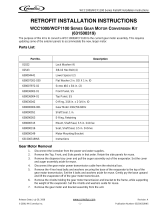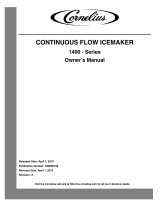
Horizon 1650R/N Ice Machines 3
Welcome to Follett Corporation ..................................................................................................................................4
Specications ...............................................................................................................................................................5
Operation .......................................................................................................................................................................7
Cleaning, weekly exterior care ..............................................................................................................................7
Cleaning, semi-annual evaporator cleaning ..........................................................................................................7
Service ......................................................................................................................................................................... 12
Ice machine operation .........................................................................................................................................12
Water system .......................................................................................................................................................13
Electrical system .................................................................................................................................................14
Normal control board operation ....................................................................................................................14
Test points ....................................................................................................................................................15
Error faults ....................................................................................................................................................15
Hard errors ...................................................................................................................................................15
Soft errors .....................................................................................................................................................15
Relay output indication .................................................................................................................................15
Compressor/refrigerant solenoid output .......................................................................................................15
Wiring diagram, evaporator unit ...................................................................................................................16
Wiring diagram, condenser unit ...................................................................................................................17
Gearmotor data ............................................................................................................................................17
Mechanical system ..............................................................................................................................................18
Evaporator disassembly ...............................................................................................................................18
Evaporator reassembly .................................................................................................................................20
Refrigeration system ...........................................................................................................................................23
Condenser unit operation .............................................................................................................................23
Refrigerant pressure data .............................................................................................................................23
Refrigerant charges ......................................................................................................................................23
Refrigeration system diagram.......................................................................................................................24
Refrigerant replacement requirements .........................................................................................................25
Evacuation ....................................................................................................................................................25
Ambients (evaporator unit) ...........................................................................................................................25
Ice capacity test ...........................................................................................................................................25
Bin full detection system .....................................................................................................................................26
Troubleshooting ...................................................................................................................................................27
Replacement parts ..............................................................................................................................................30
Table of contents























